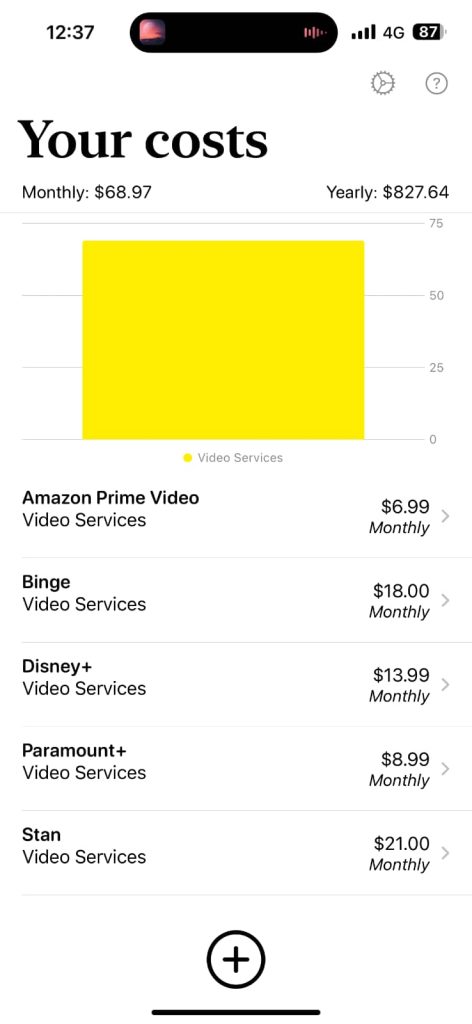Looking to save a little money on your budget? If you subscribe to video services with family members, you just might cut back a bit, provided it’s allowed.
Saving money is hard, almost as much as budgeting, but if you’re looking to cut back in the little conveniences, there’s a good chance that video services will be one of the first things to go.
While gym membership can be a costly hit to your monthly budget and you might want to reevaluate your insurance plans for a better price, entertainment services are the logical cut we can clearly see in our budgets.
You will probably want to keep at least one or two video services, but which one, and are there any hacks to keep your entertainment going?
Well, maybe. You can share your services with a friend or family member. Kind of, anyway.
Can you share video services and save money?
Rules on the internet can get into a little bit of a grey area when companies don’t explore them fully, and that is largely where video sharing finds itself.
Netflix is clearly against it, reportedly working on rules and technology to force computers to share the same household connections otherwise risking an account lock out, but other companies are a little more friendly about the situation, at least for the moment.
For instance, here in Australia where simplsaver is built, Binge relies on the logic of “simultaneous streams” and doesn’t say where those streams need to be housed, just that if you pay for the basic, standard, and premium services, you’ll have access to one, two, and four simultaneous streams respectively.
It’s a similar situation with Australian streaming service Stan, which implies families in its wording, but notes the basic, standard, and premium plans will work with one, three, and four screens at the same time respectively. Stan doesn’t say where those screens need to be; a single family home is implied in a line of text — “Stan recommends the Premium subscription plan for families with different tastes and multiple devices” — but it doesn’t directly say it.
In fact, video service providers seem to shy away from suggesting where they have to run. We suspect this might be because so much viewing happens outside of the house: if you have a network at home, but you travel regularly, your viewing location could be anywhere. It could be at home where most of the family is, but it could also be somewhere else, anywhere else. Suggesting a forced location isn’t exactly in the purview of a streaming company.
At the time this article was written, Amazon’s Prime Video limited the stream to “up to three titles at the same time using the same Amazon account” while Disney+ maxed out at four devices concurrently noting “4 streams from the same account” in a GroupWatch. That could be four people in the same house watching Disney+, or just four people sharing the account.
Sharing accounts can save you money
The obvious point in all of this is something you’d already probably know: sharing services can save you money. Granted, the amounts are small, but they can add up.
Ideally, if you pay for one streaming provider shared between one or two other households — such as your parents living in a different home — and they pay for another, you could end up saving between $10 and $21 per month, and possibly more.

Streaming service costs add up over time, and those costs can make a sizeable dent in your monthly take home, as calculations in simplsaver show.
Five services out of the large number available in Australia could set you back close to $70 monthly. By our calculations, monthly costs for Amazon Prime Video, Binge, Disney+, Paramount+, and Stan hit as most $68.97, and that’s before you factor in other services you might rely on, such as Apple TV, Kayo, or Netflix, to name a few.
Subscribing to video services isn’t inexpensive, and the more you have, the more it adds up. It makes the case for sharing while you can if you can, though the practice isn’t legal in the UK, and may be a bit of a grey area in Australia and New Zealand.
This could all change
However this could all change, and at any time.
While Netflix is clearly no fan of password sharing, we doubt the rest of the streaming video services like it too much, either. It means if you engage in account sharing as a means of saving money, it might work for the moment, but then suddenly stop working.
There’s a good chance you’ll get a few warnings before it happens, and you might even see your video suddenly stop working as the streaming service tries to work out where the video is coming from.
But for the moment, if you can and there’s no risk of legal ramifications, sharing those “simultaneous streams” with other members of your family, extended or otherwise, could just be a handy way to cut back on your budget.
To find out how much of a dent it could make, consider making a quick 60 second budget with simplsaver and seeing just how much you’re paying monthly for all your video services. You might come out surprised.


